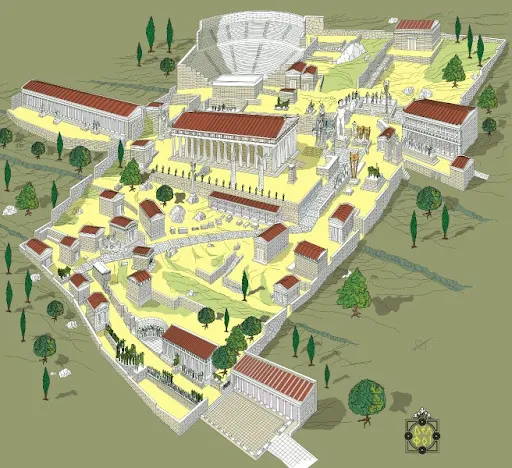Free virtual tour of the Sanctuary of Apollo at Delphi
support us - buy the map!

The reconstruction poster map of Delphi,
by the Archaeological Guide of Greece
Poster size: 85X56cm / 34X22in
Designed and produced for a convenient and handy use in site and at home, it will assist you to visualize the Sanctuary of Apollo, where theOracle of Delphi was, the Ancient Theater, the Stadion, the Gymnasion of Delphi and the Sanctuary of Athena Pronaia.

